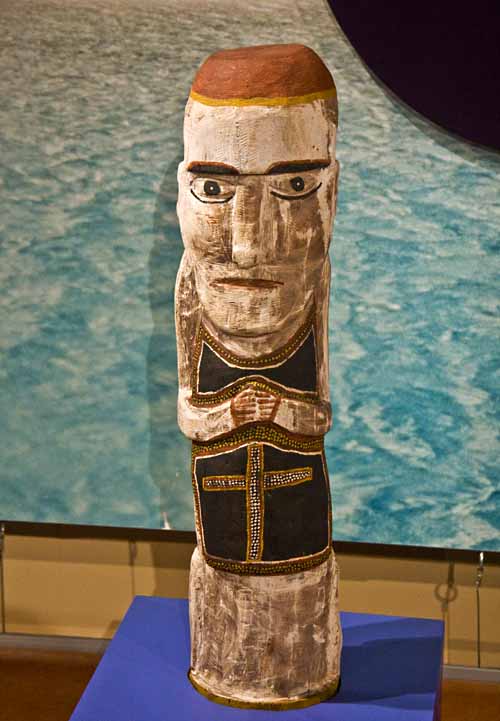A Trip to Australia and New Zealand
Sydney - Australian Museum

The reason that we included the Australian Museum on our Sydney itinerary was so that we might see their collection of aboriginal items. We were not disappointed. The collection is interesting and educational. If you know as little about the aboriginal peoples of Australia as we do, you should consider including this museum in your own itinerary while in Sydney.

The original inhabitants of Australia were not one people. They are usually lumped into one term - "Aboriginal People," but in at least some quarters that phrase is less acceptable than "indigenous people." Scholars don't much like either term and increasingly prefer to use the tribal name of the particular people being discussed at the time. The earliest human remains with a positive identification is Mungo Man who lived sometime during the Pleistocene epoch between 68,000 and 40,000 years ago. Scholars debate the exact age, but usually settle on 40,000 years ago as being a safe estimate.

Nobody knows for certain, but the best guess is that there were about 350,000 people living in Australia at the time that Europeans started nosing around the perimeter of the continent in the 16th and 17th centuries. These people were divided into hundreds of individual nations or tribes and spoke hundreds of different languages. Within a given nation or tribe there were multiple clans. Clans were composed of families. Today, they are divided into groups of tribes. The indigenous people who live in the vicinity of New South Wales are known as Koori which means "people" in their languages.

In 1788, Arthur Phillip's First Fleet arrived in Botany Bay. Europeans and the people that came with them carried germs unknown to the local people. In 1789, a small pox epidemic devastated the local Darug people killing up to 90% of them. By 1900, it was estimated that the number of indigenous people living in all of Australia numbered less than 100,000. Although it is known that there was a serious undercount involved in this estimate, there is no question but that disease and conflict had seriously reduced the population during the century or so that Europeans had been living in the country.
